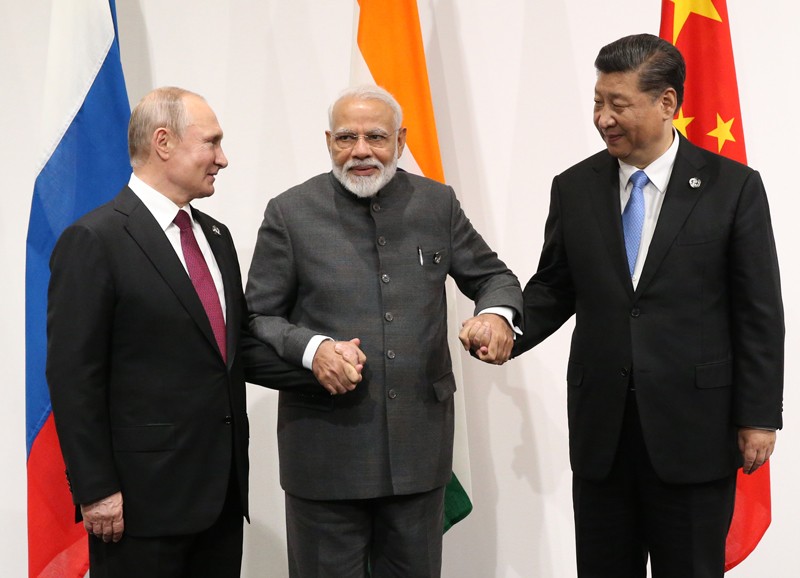For more than a decade prior to the start of the war in Ukraine, scientific research collaborations between Russia and U.S. and EU-member nations were declining. At the same tine those initiatives with China and India, the two most populous nations, have increased.
Unless there is a dramatic shift in global re-alignment, those trends are likely to accelerate. Experts say, U.S. trade and innovation policy with China, including IP rights, will need to change, too.
Technology and Security
“Technology leadership drives economic leadership which also drives national security issues,” leading economist David Teece told a panel at the 5th Intellectual Property Awareness Summit on April 5th.
“Because of the war in the Ukraine [and lack of transparency in China] U.S. and European policy is undergoing a paradigm shift… The global [economic] system is a thing of the past and we are trying to figure out how we can cooperate in a peaceful and productive way. This includes IP rights.”
Teece, Thomas W. Tusher Professor in Global Business at the University of California, Berkeley’s Haas School of Business and Chairman of the Berkeley Research Group, said it was time for the U.S. to get smarter about global innovation policy.
“We must remember that IP rights are not only a creator issue, they are an investor issue.” Lack of confidence can cause capital to shrink and assets to shift.
A recording of IPAS 2022, including the panel on which Dr. Teece spoke, “Pathways to understanding: IP challenges in China,” will be available this week on the Center for Intellectual Property Understanding’s YouTube Channel.
“Technology leadership drives economic leadership which also drives national security issues”
The session was moderated by CIPU communications committee member James Pooley, ex-Deputy Director General of the World Intellectual Property Organization (WIPO), and a trade secret expert. Also on the panel were Jiarui “Jerry” Liu, a U.S. IP attorney who has lived, worked and litigated in China, and is a Fellow at Center for Internet and Society at Stanford Law School and Bo Heiden, Co-Director of the Center for Intellectual Property studies in Gothenburg, Sweden. Teece is founder and director of the Tusher Initiative for the Management of Intellectual Capital.
Disturbing Trend
From the interpretation of the bar graph above, it appears that EU members’ share of papers co-authored with Russia have decreased by about 13% over the generally prosperous decade from 2011 to 2021. The U.S. activity in that time period went down by about 18%. China, on the other hand, has basically doubled its co-research initiatives from 7 in 2011 to around 14 in 2021, while India has gone from 5 to 8 scientific research collaborations.

“The reasons for these [policy] decisions vary, too, from the practical to the ideological,” reports NPR.
“Russia is India’s largest weapons supplier, and the two countries really have long cultural ties. Russia plays an important role in feeding 1.4 billion Indians.
“A lot of the fertilizer used in Indian agriculture comes from Russia. But two other countries factor into India’s thinking here, and those are Pakistan and China. India worries that if it alienates Russia, Russia could move closer to both of those. Pakistan is India’s archenemy.”
It is becoming clear that when it comes global politics, intellectual property rights and innovation policy are tied to technology, trade and investment, and their importance is increasing.
For the U.S. it is less a matter of the U.S. deploying stronger IP rights to exclude other nations or otherwise block them from stealing discoveries, but using IP rights wisely, domestically, to facilitate incentive and increase the nation’s ability to compete in innovation with State-funded autocracies that lack transparency.
“China, India and South Africa are not alone in keeping ties to Russia,” reports Nature, a leading science publication. “Comstech, an Islamabad-based organization representing science ministers from countries that are part of the 57-member Organisation of Islamic Cooperation (OIC), is discussing a long-term science-cooperation agreement with Russia, which is an observer state to the OIC.”
China and Russia are members of the BRICS, a group of five countries — including India, Brazil and South Africa — that work together to promote trade and economic development, and have an active program of scientific cooperation. Last year, researchers from the 5 nations organized some 100 meetings under the BRICS umbrella fields including astronomy, climate and energy, health and medicine.
The article from which the data above was sourced, “The countries maintaining research ties with Russia despite Ukraine,” indicates that the past decade has seen a steady rise in research publications with authors from China and Russia, although this is in line with China’s research growth with many more countries.
Physical sciences stand out as popular fields for researchers from between the two nations, especially physics and astronomy, as well as materials science and engineering.”
Image source: nature.com

